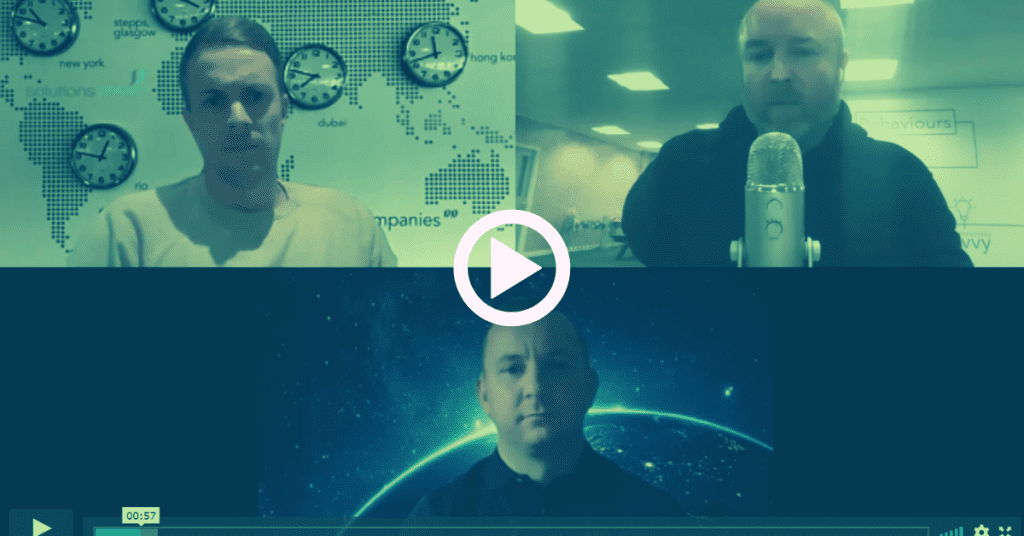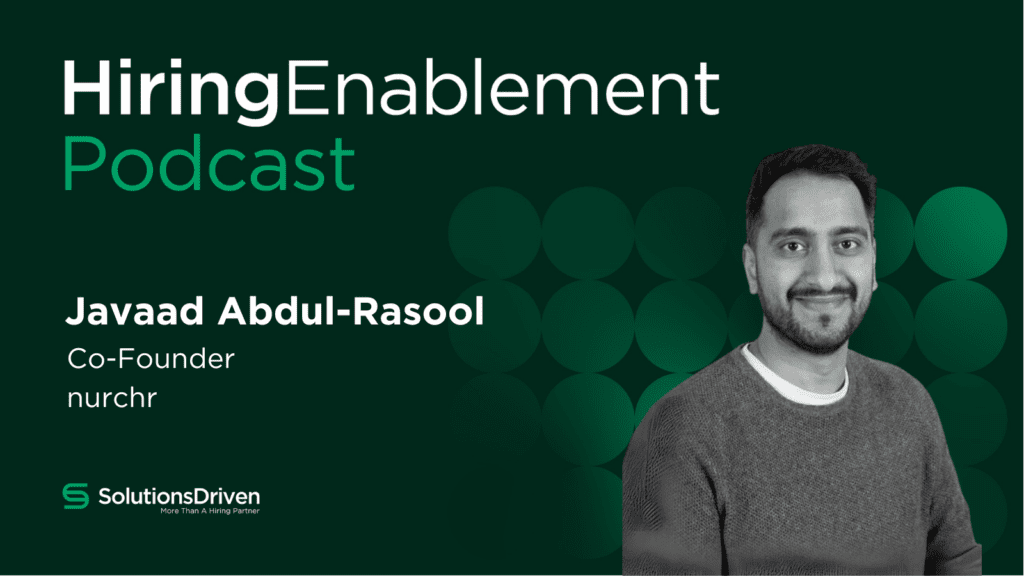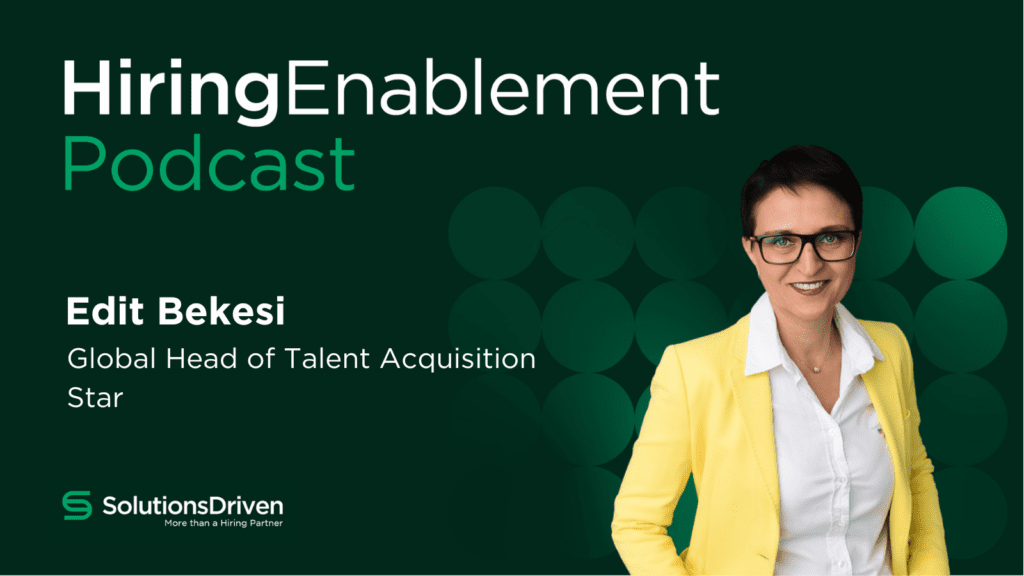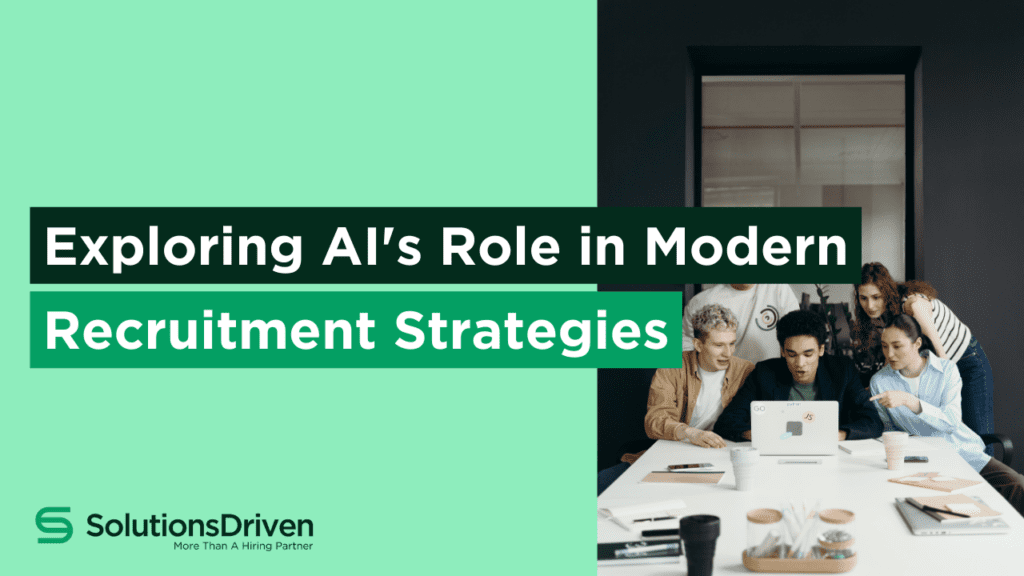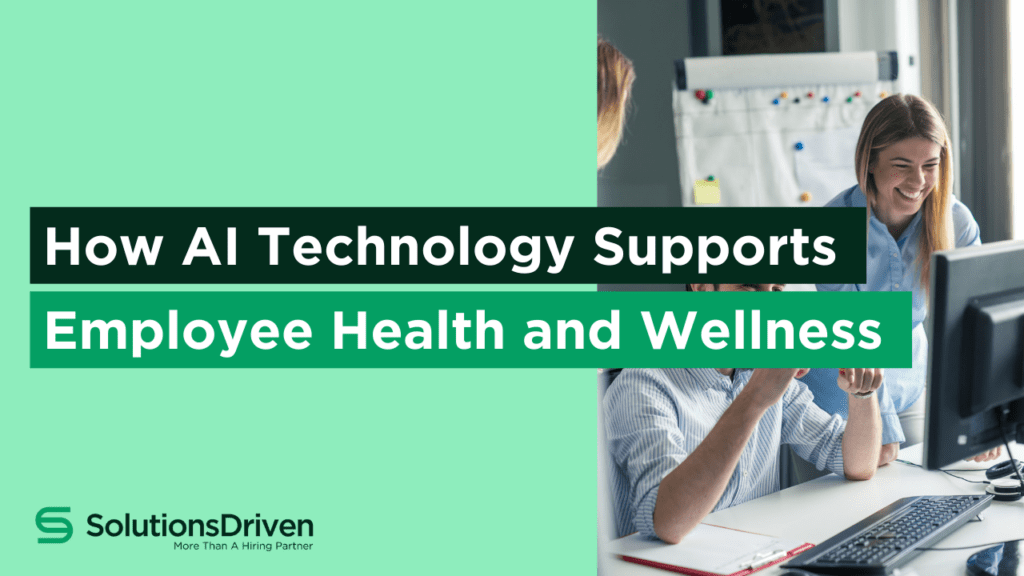Last week we caught up with Keith Palmer (Talent Delivery Specialist) and Gerry Park (Global Key Account Lead) to talk all things Talent Mapping and Talent Pipelining. Really is a hot topic right now.
Lots of great insights and takeaways in the video. And if you’ like to read, well, we’ve got the full transcript of the video for you further down the page too. ?
Lastly, to accompany the video, we’ve created ‘The Ultimate Guide to Talent Mapping Intelligence’ which has some great information on how talent acquisition departments, recruitment teams and hiring managers can use Talent Mapping Intelligence along with some case study examples.
Just click the video below to watch now.
Full Video Transcript:
[Robert]
Okay, everyone. I’m joined by a couple of folk from the Solutions Driven team today. We’re joined by Keith up in the top with the cream jumper there who’s one of our Talent Delivery Specialists, and Gerry who’s in Mars or somewhere in space who’s our Global Key Account Lead. So guys, we’ve been working at home for, what just over a week now? How’s it going? How’s your thoughts on it?
[Keith]
Good. Keeping busy. Say business as usual, but just in your PJs and your dressing gown. But other than that, not too bad. Gerry?
[Gerry]
Yep, going well, I think. Where I am is probably the safest place at the moment. Out of this world.
[Robert]
Probably so. I wanted to get you guys together, because something that’s coming up in a lot of conversations we’re having with companies at the moment, whether it’s with their talent teams or the HR teams is conversations around things like talent maps or talent mapping, as we tend to call it. Just for clearing up the whole conversation, first of all, Keith, what is a talent map or talent mapping?
[Keith]
Good question. That’s a question I’m not surprised to hear. It’s essentially a way to help our clients gain an insight into the current employment market, and we can do that by using our knowledge, our tools, to align our client’s strategy up to almost their business objectives. And also to ensure that their success against these objectives as well. These could be objectives around continued growth, or it could be, for example, relocation to a new country. It’s offering a bespoke service where we can use our knowledge and tools to help align strategy to business objectives.
[Robert]
Do you have anything to add to that, or is that …
[Gerry]
Yeah, I agree with Keith there. Basically the way I would put it is it’s basically a piece of research, as Keith said, bespoke, because every client wants to get something different out of the talent map. It’s basically a piece of research for us to then provide data, intelligence, insights, to help them either attract candidates, or understand the talent pool, or search universe a lot better.
[Robert]
Logical next question, why would I want one of these? I suppose if we went through a conversation with a client about a talent map or doing a talent map exercise, what’s the actual real benefit to a company from doing that?
[Gerry]
Sure. You can perform a talent maps, if you’re looking to open, say, a new office, you’re not sure of the talent availability of the talent pool there, you can test the pool and you can look at the availability of candidates. You can also use it for compensation and benefits matching as well. How much your competitor’s paying, how many holidays do they get, that type of thing. Also to increase your own value proposition, so to understand candidate’s motivation, why would a candidate want to join you over one of your competitors? So that you can actually go and create your value proposition to ensure it’s the most attractive it can be to potential candidates, really.
[Gerry]
You can also use it for pipielining candidates as well. A lot of, especially in the current climate at the moment, there’s a lot of candidates who are available. We can pipeline those candidates into internal teams, and basically act as an official resource to those internal teams. If they’re busy with assignments that they’re doing at the moment, then we can just feed them and pipeline candidates. You can also, as you say, every talent map is unique. But there’s a lot of insights and intelligence you can get from that.
[Robert]
Anything to add to that, Keith?
[Keith]
No, he’s covered all the points. I think the key buzzword, Rob, is it’s a bespoke service where we ask the client, “What do you want to achieve from this? How can we help you?” And could be, as Gerry mentioned, continued growth. A company are looking to grow their sales team. They’re looking for more information on talent communities. How responsive is that market? How willing and ready are these people to move? It could be more questions on do you know the client? Do you know the brand? How well perceived is this brand? Brand awareness. Another thing that Gerry mentioned is a client could be looking to open up a design centre.
[Keith]
They have a couple of options on the location of the country, but they want more information on what’s talent like in these places? Are they easy to hire? What’s the prevalence of talent? Again, how attractive is this market? And salary expectations in these countries? Because they all come with different cost of livings, different economic situations. They want to see how that fits against their budget. The key question is what does a client want to achieve and how can we tailor that to you?
[Robert]
What does that process look like, Keith? If someone watching this video thought, “That sounds interesting. Let’s have a chat,” what would that process look like? How long does it take? What kind of things are involved in that?
[Keith]
Good question. It depends on a number of things, what you want to achieve, your key objectives. The first thing that we would do with a client looking to engage in talent mapping is agree upon the objectives. We’ll sit down. We’ll engage in a scoping conversation to truly understand the business needs and how we can align talent mapping to tick those key objectives. Again, whether it’s based on growth or relocation or opening up a new sight in a new country, we’ll then recommend how we move forward, what kind of resources that we can allocate to this project. It could be, if it’s a large scale project where you’re looking to map out several different job titles, several different countries, we can allocate more resources and more time to that project.
[Keith]
It’s dependent on how complex the project is. For example, some clients historically have asked us, “We have our own talent acquisition team, so we like to do our own recruitment. But we’re overloaded just now. Can you support us with identifying talent?” So we will provide, as an output. It could be, for example, a pipeline. It could be, “Here are a list of potential candidates within that region,” wherever that region is. Alternatively, the client could be looking for support on market insights, competitor analysis. “We’re looking to hire or head hunt top talent, and can you tell us who our competitors are in and around this region, and can we almost head hunt from that talent?” We can pull a nice package together to say, “Yes, here are your competitors. Here’s the talent, and this is how we can approach them.”
[Robert]
This all sounds great, and me as a marketer, I’ve not been involved with talent mapping before. But we’ve clearly done a number of these over the years, and as I said earlier on, it’s clearly a conversation which is hot topic at the moment, considering everything that’s going on at the moment. Can you give me just even one example each of case of companies we’ve worked with…whether you can name the company or not, it’s down to you, but where we’ve actually done talent mapping or talent pipeline, as you maybe call it. Just show us roughly what process you went through, what the company’s ask was, I suppose, in the first place, and ultimately how they benefited from actually doing this, would be great to know.
[Keith]
Gerry?
[Gerry]
Struggling to pick one, because we’ve done quite a few recently. But we’ve done one for a company called Leidos, a global company of 10,000 employees, and involved in the aerospace, aviation, etc., But a sight in Glasgow, and they were hiring a lot of software engineers, all levels, from entry level to senior software engineer. They had real problems with actually attracting candidates. We could find them. We could find them through LinkedIn … social media platforms and so on. So they could identify them. But the issue was they couldn’t attract them. So they asked Solutions Driven, “Okay, I’d like you to go to the market, and I’d like to look at what universities, first of all, these candidates graduated or completed their course in. Okay, where were they after university?” Then also to understand, “Okay, what’s the compensation benefits that they’re getting at all different levels?” So that can be, as I said, from entry up to senior level.
[Gerry]
What’s their motivations? Are they motivated in money only? Is it just salary? Is it location? Is it the technology that they’re working on, etc.? So why would someone join an organisation, for example? And also, the likelihood of the responsiveness to the Leidos brand. Keith actually completed this project, so he mapped all the universities and he matched all the competitors and so on, so we done that identification part. So first part is identifying candidates. Then he engaged those candidates to get live data based on speaking with candidates to get the salary, to get the benefits, to understand their motivations, etc. So Keith then packaged this into a talent map, and intelligence profile, to allow Leidos to then go to the market and say, “Okay, we’re actually paying below what the market average is, and this is what to do to attract candidates at different level as well.” Keith, you obviously, you actually conducted this map, but maybe you can add something to that.
[Keith]
No, good summary. I think some of the key objectives that Leidos were looking for, future talent, where are these engineers coming from? So the universities was a key thing. Mapping out the competitors was an interesting thing as well, as we were able to identify a few different initiatives that their competitors were doing to attract students to their companies, and hopefully gave Leidos a chance to look at that and say, “Well actually, they’re implementing this exercise to attract talent. Maybe we should do something similar.”
[Keith]
One interesting thing, and I won’t mention the competitor, but they had a huge gender diversity push to really try and offset the stigma that engineers perhaps more males, and they were pushing for more females. They had a fascinating, I suppose, marketing agenda to try and attract females into engineering roles. Leidos, I recall, found that really interesting. Not key objective, but it was a nice finding to add to the report. So no, good summary, Gerry, and a good project to work on.
[Gerry]
Just to carry on some of that, the final report they got with information on the salary compensation benefits compared to competitors, but also provided a list of candidate names as well, that Keith had already engaged with these candidates, and they could say, “Okay, go after candidate A, B, C,” for example, and then Keith could go and reach out to them, because we know Keith’s already warmed them up, and they’re interested, and they can move fast and high.
[Robert]
Perfect. Any other examples, or are we good? Any other ones that spring to mind?
[Keith]
That’s a good example, Rob, of where the client is looking for market intelligence to, I suppose, not to continue to grow, but just to find any holes, anything they can do differently. One example I’d like to share was with a company called AT&S, a huge global semiconductor company, where they were looking to open up … it was a design centre for RF activity. They needed support on what location to open up, what country to enter. They had a couple of ideas about, “It could be this country, it could be that country,” so they said to Solutions Driven, “Can you map out talent and additional data, additional analysis, competitor analysis, salary analysis, in these three or four locations?”
[Keith]
We said, “No problem at all.” It wasn’t the absolute fundamental decision making tool, but it supported their decision making process. For example, in one country, talent community was significantly higher than the other three countries. So that tells you from our initial data, you may get more success in that country because it’s a higher prevalence of talent. However, you dig deeper, what you actually find is a country that has the third largest talent pool. They’re more responsive because we engaged in an engagement campaign to understand how responsive the market is. Do they know brand? Is this something they would be interested in if the project was to kick off? For example, if they were to open up the RF centre and start hiring, would you be interested in hearing back from Solutions Driven?
[Keith]
We were able to also identify that this country, this country, fit with your budget, this country doesn’t. It was different in the areas we were looking at there. They were looking at future prospect talents. We were mapping out universities. If they do open up an RF centre in this country, is there a, not a guarantee, but is there the chance that there’s a continued pipeline of students who can fill that RF centre? They were looking at, again, competitor analysis is a big thing. What are competitors doing over there? What’s the employment trends? Who’s hiring from who? Who’s stealing top talent from who? These kind of questions we were able to answer. The output from that was a complete packaged product report that had both qualitative data speaking with the market, and quantitative data, which is us using our tools, our software, to really dig deep into the market and find all the data.
[Keith]
But also, it came with a presentation to the senior management team. Again, just to support the decision making process. Not the final, “Based on this data, let’s proceed,” but just to support that decision making process. Just to give them more ammunition, if you like.
[Robert]
Great. I appreciate both of your time, guys. That was great. As I said, I’m marketing, so it was great to hear actually more about talent map and talent pipelines, how they work. Actually seeing some of these examples is great. For anyone who’s watching this video, somewhere below the video I’ll post a link to where they can learn more about talent mapping, whether it’s collateral, documentation. But anyway, other than that, guys, thanks very much for your time. Appreciate it, and I’m sure we’ll catch up very soon.

